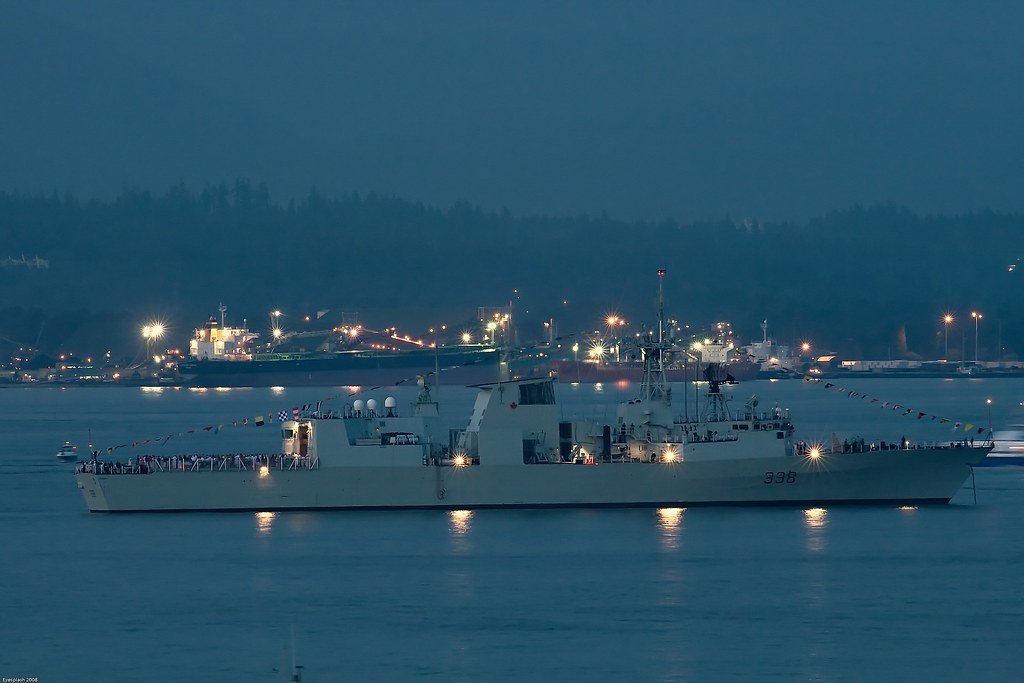U.S. and Canadian Warships Navigate the Taiwan Strait Amid G20 Summit in India
On a recent Saturday, the world noted the passage of a U.S. and a Canadian warship through the strategic Taiwan Strait, as declared by the U.S. Navy. This navigation marked a significant juncture, being the second combined mission of its kind since the previous occurrence in June. Interestingly, this maneuver coincided with the attendance of leaders from both nations at the G20 summit, which was hosted in India.
Details of the Joint Transit
The 7th Fleet of the U.S. Navy provided details of the voyage. In the fleet were the guided-missile destroyer named the USS Ralph Johnson representing the U.S., and from Canada, the HMCS Ottawa. This voyage through the Taiwan Strait was dubbed as “routine” by officials. The U.S. Navy emphasized that such journeys through these waters are exercised under the high-seas freedoms of navigation and overflight, which are in alignment with international norms and regulations.
The U.S. Navy further stated, “Ralph Johnson and Ottawa’s bilateral transit through the Taiwan Strait signifies the unwavering commitment of the United States, coupled with the dedication of our allies and partners, to uphold the principles of a free and open Indo-Pacific.”
China’s Response to the Transit
China, which claims Taiwan as part of its territory, responded with its customary condemnation for such undertakings. Chinese military officials criticized the naval ships’ transit, branding their activities as “public hyping” within the strait that serves as a divider between the mainland and Taiwan.
While China insists on its sovereignty over Taiwan, the government of Taiwan vehemently denies these claims. Taiwan’s stance is firm: only the citizens of the island should possess the right to decide the course of their destiny.
Furthermore, the Eastern Theatre Command, a segment of China’s People’s Liberation Army, shared that they had actively tracked the movement of the ships. Their personnel “handled” the situation, ensuring actions were in sync with prevailing laws and protocols.
Taiwan’s Observation of the Event
Taiwan’s defense ministry, on the other hand, offered a more neutral observation. They noted that the warships proceeded in a southern trajectory during their transit. According to their monitoring, nothing out of the ordinary occurred during this passage.
Backdrop of the G20 Summit
The U.S. Navy’s announcement about the naval voyage came at a time when the G20 summit in New Delhi was concluding its proceedings. Notably absent from the summit was Chinese President Xi Jinping. However, both U.S. President Joe Biden and Canadian Prime Minister Justin Trudeau marked their presence.
This isn’t the first time the Taiwan Strait has been in the spotlight. Post the joint sailing in June, the U.S. Navy unveiled a video clip. This clip portrayed what they termed as an “unsafe interaction” in the Taiwan Strait, where a Chinese warship audaciously maneuvered ahead of a U.S. destroyer.
While the U.S. warships make their way through the strait approximately once every month, it’s indeed a rarity for them to be accompanied by warships from allied nations.
Growing Chinese Military Activities
Over recent years, there has been a palpable increase in China’s military exercises around Taiwan. China explains these augmented operations as reactions to what they perceive as “collusion” – a joint effort between proponents of Taiwan’s independence and the U.S.
In Conclusion
The Taiwan Strait remains a focal point in the arena of geopolitics. Its waters have witnessed the ebb and flow of military might and diplomatic maneuvers. As the U.S. and its allies reaffirm their commitment to maintaining a free and open Indo-Pacific, they simultaneously tread the delicate balance of diplomacy and power projection. As nations converge on platforms like the G20 summit, backchannel discussions likely touch upon these very topics, underscoring the importance of every ship’s voyage through these contested waters.
Reda More:
